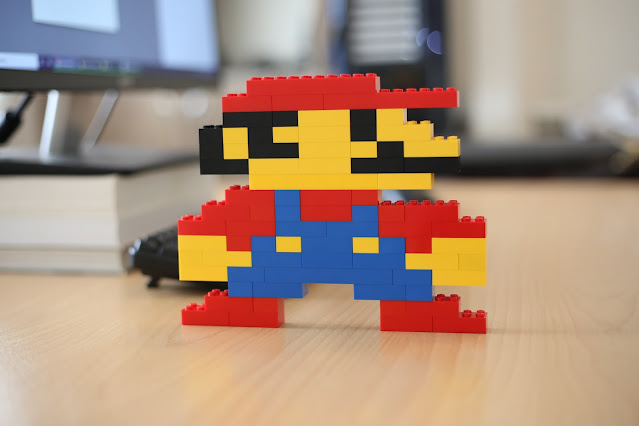The Marketing Skill Gap That's Costing You Customers (And Your Career)
You think you don't need design skills.
I get it. You're busy running campaigns. Analyzing data. Writing copy. Managing budgets. Design feels like someone else's job.
Here's the problem: While you've been focusing on everything else, the marketing world changed around you.
Your competition isn't just learning design. They're using it to eat your lunch. In this article, we're going to understand why design is a crucial skill for every marketer.
Key Takeaways
The Reality Check
Marketing has shifted from messages to visual experiences
People judge your marketing in 50 milliseconds
Design-savvy marketers earn 15-25% more than those without these skills
The Competitive Advantage
Marketers with design skills move faster than those dependent on design teams
While you wait weeks for design approval, competitors test multiple concepts
Visual content gets 94% more engagement than text-only content
Essential Skills to Learn
Visual hierarchy (guiding the eye through content)
Color psychology (red = urgency, blue = trust, green = growth)
Typography (fonts communicate personality and professionalism)
White space (breathing room that makes content feel premium)
Consistency (builds recognition and trust)
Tools That Changed Everything
Canva democratized graphic design for non-designers
Figma made prototyping accessible to marketers
AI tools create custom visuals with the right prompts
No-code platforms assume basic design knowledge
Career Impact
Companies pay premiums for hybrid marketers
Remote work favors self-sufficient professionals
Future marketing roles require cross-disciplinary skills
Design knowledge turns you from order-taker to strategic creator
The Learning Path
Start with fundamentals, not artistic techniques
Practice on real marketing materials, not fake projects
Use templates as training wheels, not permanent solutions
Get feedback and iterate quickly
The Wake-Up Call You Need
Two marketers apply for the same promotion. Same experience. Same results. Same qualifications.
But one can create their own graphics. Design landing pages. Mock up email campaigns. The other needs to wait for the design team for everything.
Who gets the job?
It's not even close.
The marketer with design skills isn't just more valuable. They're faster. More independent. More creative. They speak the language that drives modern marketing.
You might think this is unfair. "I'm a strategist, not a designer."
That thinking will kill your career.
Why Design Became Non-Negotiable
Every touchpoint with your audience is visual. Your social media posts. Email newsletters. Landing pages. Ads. Presentations. Even your data reports.
People don't just read your marketing anymore. They see it. Feel it. Judge it in seconds.
That judgment happens faster than you think. Research shows people form opinions about websites in 50 milliseconds. Fifty. That's faster than you can blink.
If your marketing looks amateur, people assume your product is too.
The Data Doesn't Lie
Companies with strong visual branding see 23% higher revenue growth.
Content with relevant images gets 94% more views than text-only content.
94%.
Let that sink in.
Your brilliant strategy means nothing if it looks terrible. Your perfect copy gets ignored if the design is ugly.
What Happens When You Can't Design
Every idea needs approval. Every test requires resources. Every campaign waits for someone else's schedule.
I've watched marketers with great instincts fail because they couldn't execute their vision. They had amazing ideas. But turning those ideas into reality took weeks.
Their competitors? They tested ten concepts in the same time.
The Bottleneck Problem
Here's what your typical campaign creation looks like without design skills:
You have an idea
You write a brief
You wait for design availability
You review the first draft
You request changes
You wait again
You review again
You finally launch
Your competitor with design skills:
They have an idea
They create it
They launch it
While you're still waiting for your first draft, they've tested five versions and found a winner.
Speed isn't just convenient. It's competitive advantage.
The Skills That Actually Matter
You don't need to become Michelangelo.
You need practical skills that solve real marketing problems.
Visual Hierarchy
Headlines first. Then subheadings. Then body text. Then call-to-action buttons.
Without understanding hierarchy, your marketing becomes noise. Everything screams for attention. Nothing gets it.
Look at any successful landing page. Notice how your eye flows naturally from top to bottom. That's not accident. That's design.
Color Psychology
Colors trigger emotions. Emotions drive decisions.
Red creates urgency. Blue builds trust. Green suggests growth. Orange demands attention.
Netflix uses red because it's exciting and immediate. Facebook uses blue because it's trustworthy and calm.
Your brand colors aren't decoration. They're communication tools.
Typography
Serif fonts feel traditional and trustworthy. Sans-serif fonts feel modern and clean. Script fonts feel personal and creative.
Using Comic Sans for your financial services company sends the wrong message. Using a heavy gothic font for your children's toy store does too.
Your font choice is part of your message.
White Space
Beginners try to fill every inch of space. Professionals know when to stop.
White space isn't wasted space. It's breathing room. It makes content easier to process.
Apple's marketing feels premium partly because of what they don't show. All that white space communicates sophistication.
Cramped designs feel cheap. Spacious designs feel expensive.
Consistency
This might be the most important skill.
Using the same fonts across all materials. Consistent colors. Consistent spacing. Consistent style.
Inconsistency makes you look unprofessional. Like you don't pay attention to details.
Consistency builds recognition. Brand recognition. Trust.
Real Examples of Design-Savvy Marketers Winning
Airbnb's Growth Team
Airbnb's early growth team all learned basic design skills. They didn't wait for designers to test new ideas.
They created hundreds of variations of their referral program. Different layouts. Different colors. Different messaging presentations.
Most variations failed. But they found winners fast because they could test fast.
Traditional companies would have spent months on each variation. Airbnb tested them in days.
Dropbox's Landing Page Evolution
Dropbox's original homepage was designed by their marketer, not a designer.
It wasn't beautiful. But it was clear. It communicated the value proposition perfectly.
That simple page helped them grow from zero to 100 million users.
Later, they hired professional designers. But the foundation of their success came from a marketer who understood design basics.
Buffer's Social Media Templates
Buffer's marketing team creates their own social media graphics.
They don't wait for designers. They use simple templates and consistent branding.
Their posts look professional because they understand design principles. Color consistency. Typography hierarchy. Visual balance.
This speed lets them respond to trends immediately. While competitors wait for design approval, Buffer is already posting.
The Tools Changed Everything
You don't need expensive software anymore.
Canva democratized design. Figma made prototyping accessible. Templates eliminated the blank page problem.
These tools removed the technical barriers. Now the only barrier is knowledge.
Canva for Marketers
Canva gives you templates for everything. Social posts. Email headers. Presentations. Ads.
But templates aren't magic. You still need to know what makes good design.
Which template fits your message? How do you customize it without breaking it? What colors work together?
Design knowledge turns templates into powerful tools.
Figma for Prototyping
Figma lets you create interactive prototypes without coding.
Want to test a new landing page layout? Create it in Figma. Share it with stakeholders. Get feedback before development.
This saves weeks of revision cycles.
AI Design Tools
AI tools like Midjourney and DALL-E create custom images in seconds.
But they need good prompts. Prompts that come from understanding design principles.
"Create a professional business image" gets generic results.
"Create a minimalist tech startup hero image with blue and white color scheme, featuring abstract geometric shapes suggesting innovation and growth" gets usable results.
Design knowledge makes AI tools actually useful.
What Your Boss Really Thinks
Your boss won't tell you this directly. But they're thinking it.
Why do they need to hire a designer for every small project? Why does everything take so long? Why can't you just make a simple graphic?
They see other marketers creating their own materials. Moving faster. Costing less.
You look expensive by comparison.
The Budget Reality
Marketing budgets are shrinking. Teams are getting smaller. Everyone needs to do more with less.
A marketer who can design saves the company money. They reduce dependencies. They increase speed.
That marketer gets the resources. The opportunities. The promotions.
The Skills Premium
Companies pay more for marketers with design skills.
According to recent salary data, marketers with design abilities earn 15-25% more than those without.
That's $10,000-$20,000 extra per year for most positions.
Design skills literally pay for themselves.
How This Impacts Your Daily Work
Design affects everything you do.
Email Marketing
Your open rates matter. But your click rates matter more.
Click rates depend heavily on design. Email layout. Button placement. Visual hierarchy.
A marketer who understands design creates emails that convert better. They don't need to guess what works. They know.
Social Media
Every social post is a design decision.
Font choice. Color selection. Image cropping. Text placement.
Posts that follow design principles get more engagement. More shares. More comments.
Your organic reach depends partly on visual appeal.
Presentations
You give presentations constantly. To clients. To executives. To your team.
Bad design makes you look unprepared. Good design makes your ideas seem stronger.
The same strategy presented poorly gets rejected. Presented well, it gets approved.
Landing Pages
Conversion rates separate good marketers from great ones.
Landing page design directly impacts conversion. Layout affects user behavior. Colors influence decisions. Typography impacts readability.
A 2% conversion improvement might seem small. But it doubles your campaign ROI.
Data Visualization
You work with data daily. Analytics reports. Performance dashboards. Campaign results.
Well-designed charts communicate insights clearly. Poorly designed ones hide important patterns.
Your recommendations carry more weight when your data looks professional.
The Learning Path That Actually Works
You don't need art school.
You need practical skills you can learn in weeks, not years.
Start With Fundamentals
Learn the basic principles first. Visual hierarchy. Color theory. Typography basics. Composition rules.
These principles apply everywhere. Once you understand them, every design decision becomes clearer.
Practice With Your Own Work
Don't practice with fake projects. Redesign your actual marketing materials.
Your email templates. Social media posts. Presentation slides.
You'll see immediate improvements in your real work.
Copy What Works
Find marketing materials you admire. Study them. Understand why they work.
What makes that landing page convert? How does that email grab attention? Why does that ad stand out?
Reverse-engineer success.
Use Templates Intelligently
Templates are training wheels, not crutches.
Start with templates. But customize them thoughtfully. Understand why certain elements are positioned where they are.
Eventually, you'll outgrow templates. But they're perfect for learning.
Get Feedback
Show your work to people. Ask specific questions.
"Is this clear?" "Does this look professional?" "What would you change?"
Design improves with iteration. Feedback accelerates iteration.
The Objections You're Making
"I don't have time to learn design."
You don't have time not to learn it. Every day you wait, you fall further behind.
"Our company has designers."
Your company also has accountants. But you still need to understand budgets.
"I'm not creative."
Design isn't just creativity. It's problem-solving. You solve problems all day.
"Good design is subjective."
Some aspects are subjective. But effective design follows proven principles.
"I tried learning design before and gave up."
You probably started with the wrong approach. Learn practical skills, not artistic techniques.
The Future Belongs to Hybrid Marketers
Marketing is becoming more integrated. The lines between disciplines are blurring.
Content marketers need video skills. Email marketers need automation knowledge. Growth marketers need product sense.
And all marketers need design skills.
The future belongs to hybrid professionals. People who can work across disciplines. Who don't need to hand off work to specialists for every task.
Pure specialists still have value. But hybrid professionals have opportunity.
The Rise of No-Code
No-code tools are exploding. Landing page builders. Email designers. Social media schedulers.
These tools assume you understand design principles. They give you power, but you need knowledge to use it well.
Marketers who combine design skills with no-code tools become incredibly productive.
Remote Work Implications
Remote work favors independent professionals.
When you can't tap someone on the shoulder for quick help, you need to be self-sufficient.
The ability to create your own graphics, mock up your own ideas, and visualize your own concepts becomes essential.
Your Action Plan
Stop making excuses. Start learning.
Week 1: Foundations
Learn basic design principles. Visual hierarchy. Color theory. Typography basics.
Spend 30 minutes a day reading or watching tutorials.
Week 2: Tools
Sign up for Canva Pro. Watch their tutorials. Create your first graphics.
Start with simple social media posts. Use templates initially.
Week 3: Application
Redesign one piece of your existing marketing. An email template. A presentation. A social media template.
Apply the principles you learned.
Week 4: Feedback
Share your work with colleagues. Ask for honest feedback.
What works? What doesn't? What would they change?
Month 2: Expansion
Try more complex projects. Landing page mockups. Email campaign designs. Presentation templates.
Start moving beyond templates.
Month 3: Integration
Make design part of your regular workflow.
Create your own graphics for social posts. Design your own email headers. Mock up your own campaign ideas.
Ongoing: Evolution
Stay curious. Study great marketing design. Try new tools. Experiment with new approaches.
Design is a skill that improves with practice.
The Bottom Line
You have a choice.
You can keep waiting for other people to execute your ideas. Keep watching competitors move faster. Keep feeling dependent on specialists for every visual task.
Or you can learn the skills that modern marketing demands.
Design isn't optional anymore. It's not a nice-to-have. It's not someone else's job.
It's your job. Whether you accept it or not.
The marketers who adapt will thrive. The ones who don't will struggle to stay relevant.
Your career depends on more than just good ideas. It depends on your ability to bring those ideas to life.
In a visual world, that means design.
The question isn't whether you need design skills.
The question is whether you'll learn them before your competition does.
Your move.
Frequently Asked Questions
1. "I don't have time to learn design. How long does it really take?"
You can learn practical design fundamentals in 4 weeks with 30 minutes of daily practice. This isn't about becoming an artist - it's about understanding principles that immediately improve your marketing materials. The time investment pays back quickly when you stop waiting for design resources.
2. "Our company already has designers. Why do I need these skills?"
Having designers doesn't eliminate your need for design knowledge, just like having accountants doesn't mean you ignore budgets. You need design skills to communicate better with designers, create quick mockups for testing, and handle small projects without waiting for resource allocation.
3. "What if I'm just not creative? Can I still learn design?"
Design is more problem-solving than creativity. If you can analyze campaign performance or optimize conversion funnels, you can learn design principles. Most marketing design follows proven formulas - hierarchy, contrast, alignment, repetition. These are learnable systems, not artistic inspiration.
4. "How much do I really need to invest in design tools?"
Start with free tools like Canva's basic plan or Figma's free tier. Canva Pro costs $15/month and pays for itself quickly. You don't need expensive Adobe software for marketing design. Many successful marketers use only Canva and basic photo editing apps.
5. "What's the difference between learning design for marketing vs. general graphic design?"
Marketing design focuses on conversion and communication, not artistic expression. You need to understand hierarchy (guiding attention), psychology (influencing decisions), and consistency (building trust). You don't need to learn illustration, complex photo manipulation, or artistic composition.
6. "I tried learning design before and felt overwhelmed. Where should I actually start?"
Start with redesigning one piece of your existing marketing - an email template or social media post. Focus on one principle at a time: first hierarchy (what should people see first?), then color (what emotions do you want?), then typography (what personality fits your brand?). Avoid starting with complex projects.
7. "How do I know if my designs are actually good or just look amateur?"
Get specific feedback from colleagues: "Is the most important information obvious?" "Does this look professional?" "What would you change?" Also, compare your work to marketing materials you admire. Study what makes them effective and apply those patterns to your designs.
8. "Will AI design tools replace the need to learn design skills?"
AI tools make design faster but require better inputs. Prompting "create a professional image" gets generic results. Prompting "create a minimalist SaaS landing page hero image with blue color scheme, geometric shapes suggesting innovation" gets usable results. Design knowledge makes AI tools powerful instead of frustrating.
9. "I work at a large company with strict brand guidelines. How much design freedom do I actually have?"
Brand guidelines are design frameworks, not limitations. You still choose layouts, hierarchy, image selection, and composition within brand parameters. Understanding design helps you maximize impact while staying compliant. Many brand-compliant materials still look amateur because creators don't understand design principles.
10. "What's the ROI on learning design skills? How do I justify the time investment?"
Design skills reduce project timelines by weeks, eliminate design resource bottlenecks, and increase campaign performance. A 1% conversion rate improvement from better landing page design often generates more revenue than months of other optimization efforts. Plus the 15-25% salary premium for hybrid marketers.
11. "Should I focus on learning design software or design principles first?"
Principles first, always. Software is just tools - without understanding hierarchy, color, and typography, you'll create bad designs faster. Learn fundamentals through simple exercises, then apply them using whatever tools you have. Canva with good design knowledge beats Photoshop with poor design understanding.
12. "How do I handle feedback when people say my designs 'don't look professional'?"
Ask for specific feedback: "What makes it look unprofessional?" Usually it's inconsistent fonts, poor color choices, cramped spacing, or unclear hierarchy. These are fixable problems, not creative failures. Professional design follows patterns you can learn and apply systematically.
13. "What if my boss expects designer-level work once I learn basic skills?"
Set expectations clearly. You're learning practical marketing design, not becoming a professional designer. Your value is speed and independence for small projects, not replacing specialized design work. Be clear about what you can handle (social graphics, simple layouts) versus what needs professional design (complex branding, illustration).

































